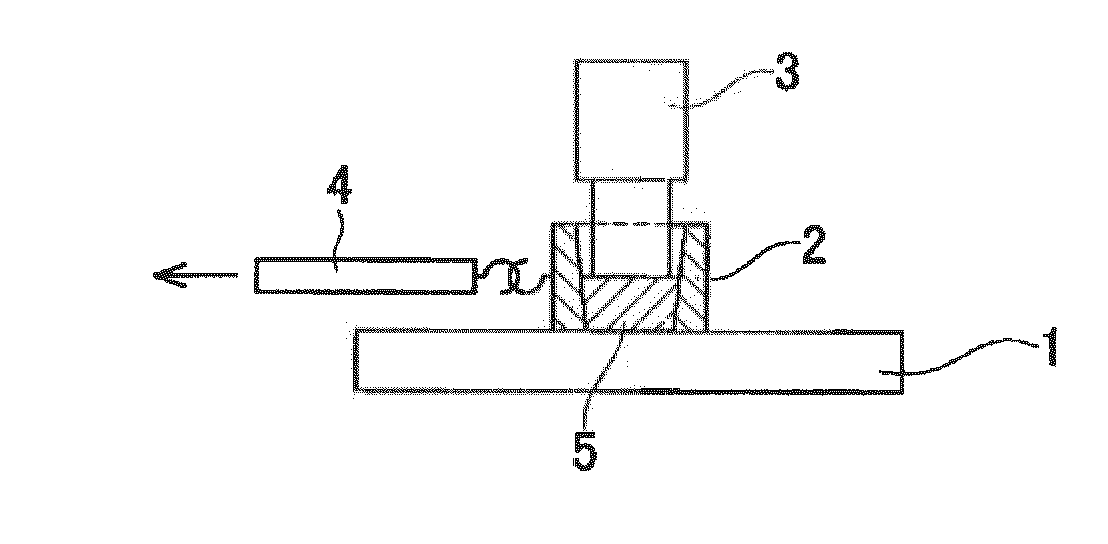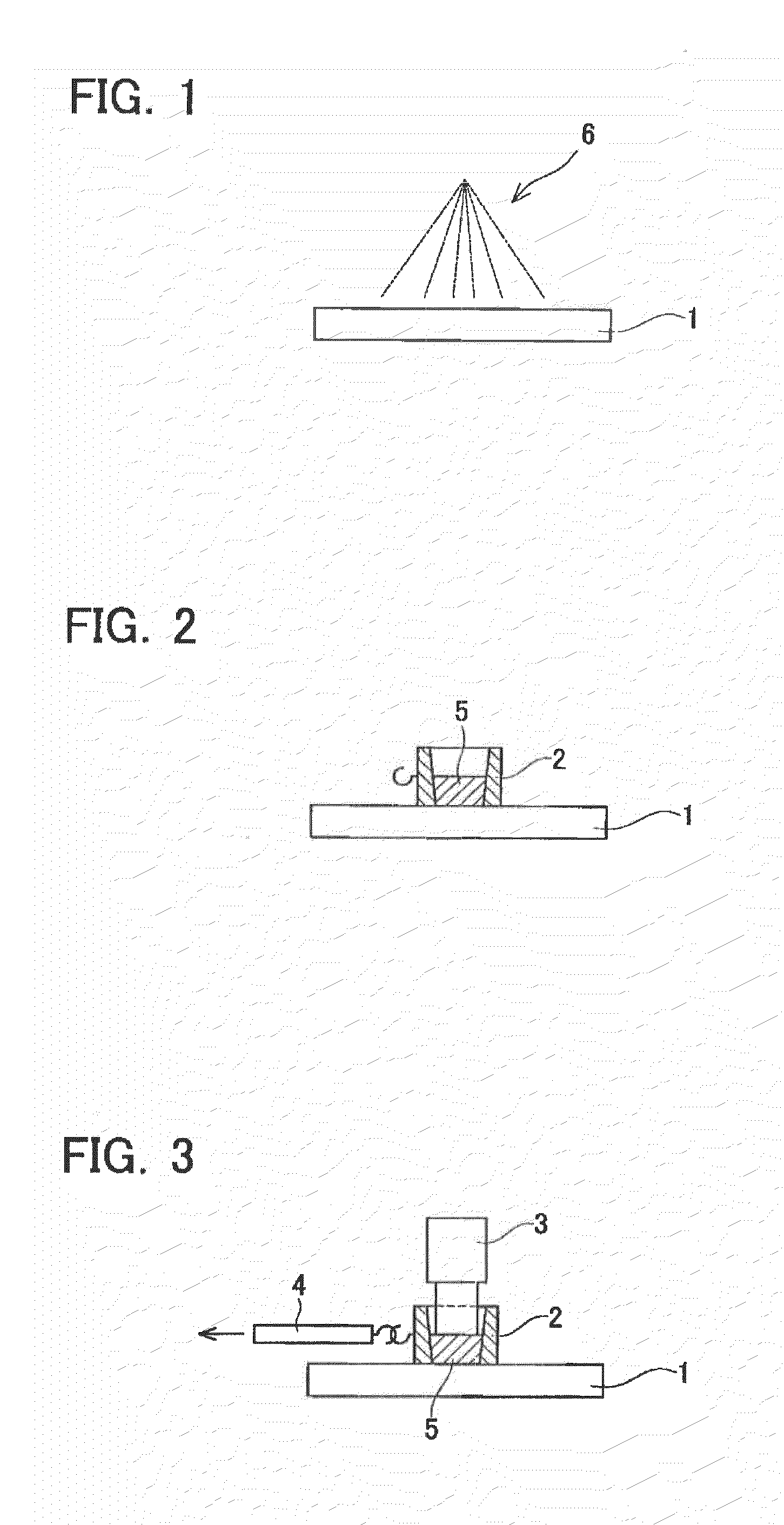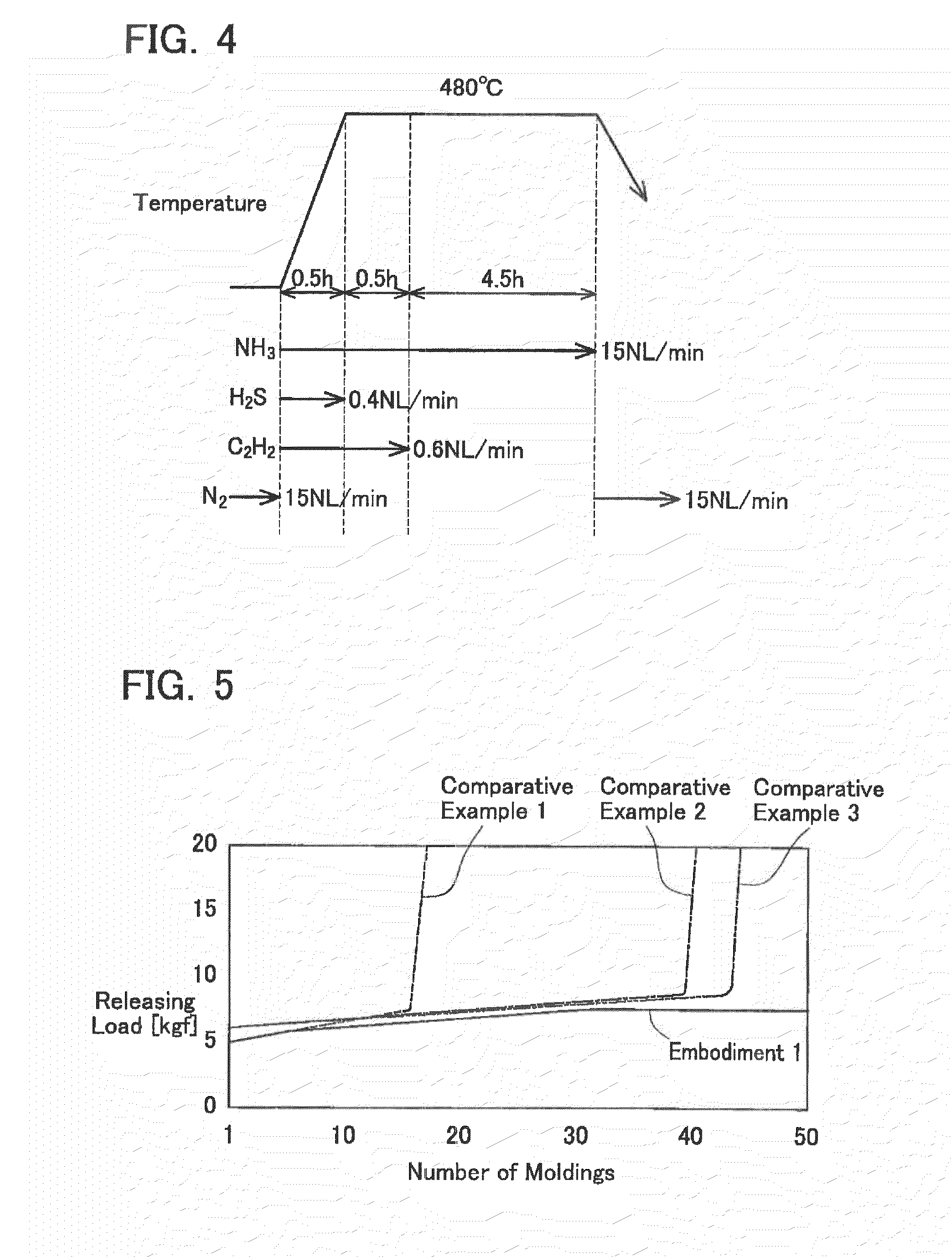Casting mold surface treatment method and casting mold using said method
a surface treatment method and mold technology, applied in the field of casting mold surface treatment method, can solve the problems of reducing release resistance, preventing sticking, and reducing release effectiveness, so as to reduce maintenance costs, prolong release effectiveness, and reduce the effect of casting mold maintenan
- Summary
- Abstract
- Description
- Claims
- Application Information
AI Technical Summary
Benefits of technology
Problems solved by technology
Method used
Image
Examples
embodiment 1
[0026]A nanocarbon film was formed on a surface of the test bed 1 by the following method. Moreover, the following method was taught in Japanese Patent Application Publication No. 2008-105082, and is a method for forming, on SKD61 steel, a carbon film (nanocarbon film) including at least one type of nanocarbon chosen from among the group of carbon nanocoils, carbon nanotubes and carbon nanofilaments.
[0027]Nanocarbon Film Forming Process:
[0028]The test bed 1 was placed in an atmospheric furnace, air was purged using a vacuum pump, then nitrogen gas (N2) was circulated to create an N2 atmosphere. Next, in accordance with the process profile shown in FIG. 4, heating to 480° C. for 0.5 h was performed while reaction gas (hydrogen sulfide (H2S) gas, acetylene (C2H2) gas, ammonia (NH3) gas) was circulated. After 0.5 h from beginning the heating, when 480° C. was reached, supply of hydrogen sulfide gas was halted, then after a further 0.5 h, supply of acetylene gas was halted. The temperat...
embodiment 2
[0044]As in Embodiment 1, the nanocarbon film forming process and then the fullerene applying process were performed on the cavity surfaces 21, 22 of the fixed mold 11 and the movable mold 12, these constituting the die casting mold manufactured from SKD61 for casting a housing of a transaxle of a motor vehicle.
PUM
| Property | Measurement | Unit |
|---|---|---|
| temperature | aaaaa | aaaaa |
| temperature | aaaaa | aaaaa |
| temperature | aaaaa | aaaaa |
Abstract
Description
Claims
Application Information
 Login to View More
Login to View More - R&D
- Intellectual Property
- Life Sciences
- Materials
- Tech Scout
- Unparalleled Data Quality
- Higher Quality Content
- 60% Fewer Hallucinations
Browse by: Latest US Patents, China's latest patents, Technical Efficacy Thesaurus, Application Domain, Technology Topic, Popular Technical Reports.
© 2025 PatSnap. All rights reserved.Legal|Privacy policy|Modern Slavery Act Transparency Statement|Sitemap|About US| Contact US: help@patsnap.com



